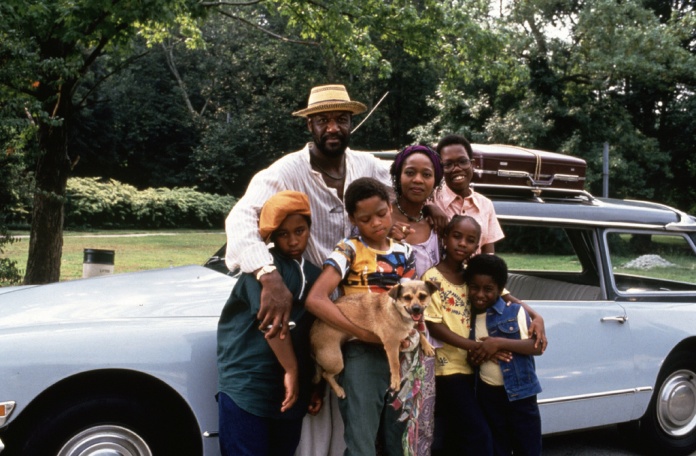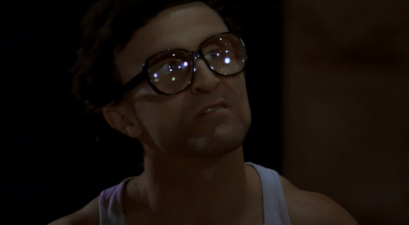
©Universal Pictures
SPOILERS!
There’s a certain aspect of nostalgia that permeates the entirety of Spike Lee’s filmography. Whether that is reflected through his montages of culturally vibrant neighborhoods or kids watching Saturday morning cartoons, Mr. Lee always knows how to use his paintbrush, confident of the reactions his painting will evoke. Maybe that’s because he sets all of his films in New York City—specifically, Brooklyn—and it’s easy for someone like me, a Brooklyn native, to feel so emotionally attached to these images of various street corners decorated with crowded houses and characters that come off as odd yet all too familiar. While these films may be easy to get lost in, Spike Lee makes it clear that his films articulate statements to audience members about the state of race in American culture; watch BlacKkKlansman and you’ll understand that progress from the 1970s to present day has been slow.
While Crooklyn plays out like a home video and retains most of Lee’s affinity for simplicity, it ultimately feels like an anomaly in his filmography; it’s not as heavy on the racial themes, and instead, its emphasis is primarily on the process of growing up and responding to unpredictable circumstances through a pair of innocent eyes. Crooklyn is also a rarity for Lee in that the protagonist is a young girl (Troy Carmichael, played by Zelda Harris)—most of his films occupy a predominantly male perspective.
In the beginning, we are introduced to the Carmichaels, a family with five children—four boys and one girl—living in a brownstone in the Bedford-Stuyvesant neighborhood that the director himself grew up in. The matriarch, is played to perfection by Alfre Woodard. Carolyn’s fiery temperament makes her intimidating to her children, and yet, her eyes convey warmth at the same time. Delroy Lindo plays Woody, the father, who was once a thriving pop musician but has now turned his attention towards more sophisticated jazz compositions; both husband and wife are constantly on edge as they struggle to make ends meet. After we progress through the first half of the film, the focus is primarily on the lives of the Carmichaels as a unit, but it eventually becomes clear that this is Troy’s narrative as we begin to follow her ventures through the neighborhood—we see her astonished glare as she observes a drag queen in a convenience store and we see her adjust to life in the suburbs when she visits her Aunt Song.
Much like Larry Clark’s Kids, Crooklyn is more effective when viewed today as it makes you hark back to memories of a past that included kids playing on street corners and sitting on stoops with board games until the sunset signalled their curfew. But unlike Kids, there’s an underlying innocence binding the Carmichael kids; part of that stems from the fact that the film serves as a semi-autobiography, drawing from Spike Lee’s memories when growing up in Bed-Stuy. This is most evident during scenes of quarrelling within the household; a fight ensues when Wendell doesn’t eat his plate of black-eyed peas, when Clinton refuses to turn off a Knicks game in his bedroom, and when Carolyn wakes her kids up to clean the damn kitchen.
Despite the film focusing solely on a family dynamic, it wouldn’t feel like a Spike Lee joint if there were no blatant observations of race in America. The Carmichaels’ neighbor, Tony Eyes, is an outsider—not only because of his white skin but also because of his eccentric behavior which leads him to trouble with the other neighbors. His resentment of the fact that he is surrounded by black neighbors manifests through the aggravation that he develops when the Carmichael kids leave their trash in his own cans. All of this boils over when he begins an argument with his neighbors, eventually calling the cops on them and having one of them arrested—a scenario America is a little too familiar with. When Troy stays with her aunt in an affluent neighborhood, her hair is ironed and her curls are flattened out; in a way, this strips off her identity and the viewer can see it in Troy’s expression as she walks with a deadpan stare and a lack of purpose. As a result, Lee quickly offers the dangers of imposing white beauty standards on young black girls.

Mr. Lee also alters technical aspects of his film in order to convey the feelings of alienation that swarms Troy’s mind when she stays over Aunt Song’s. When we watch this, we see what Troy sees when she comes across a world that might be familiar to its viewers, but foreign to her—a world dominated by clean-cut lawns, attached garages, and patios with seating space. This technique might confuse some at first viewing, but in a way, that’s the purpose.
When Troy returns, she returns with a newfound sense of self—a mature one that walks with poise in this unpredictable world. And the unpredictability of the world proves itself when she finds out just as soon as she returns that her mother is gravely ill. Troy’s stoic nature is really beautiful to watch in this moment of the film because as her brothers weep mournfully, she remains static; there’s a powerful scene right before Carolyn’s funeral where Troy is lying in bed and watching TV—her face is motionless—that perfectly conveys the feeling of dejection and heartbreak in times of unwarranted tragedies. What I love about this is how Lee reels his audience in with an easily accessible premise, but leaves us with the harsh realities of life. And in the process of doing this, we witness the transformation of the five Carmichael kids into a more mature group of siblings. Because that’s what childhoods serve—a time where we are dealt with unforeseen circumstances that shape our characteristics in anticipation of growing up.
Though Crooklyn doesn’t quite stand the test of time and isn’t as iconic as Lee’s more well-known works, it contains a deft personal touch that’s synonymous to the filmmaker’s pedigree. The film deserves to be ranked alongside other known coming-of-age stories like Stand by Me.
CONSENSUS: 3 out 4 RuPauls in a bodega